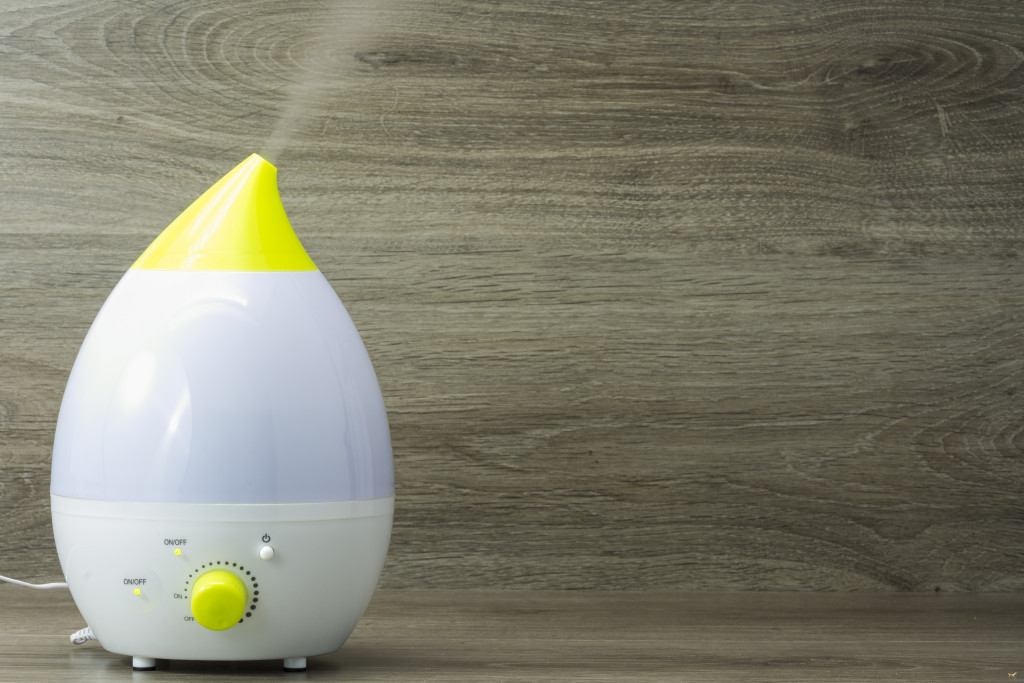Homeowners want to ensure their families are safe when they are home. But some household products pose risks to the family. These products are considered household hazardous waste (HHW), according to the Environmental Protection Agency (EPA). Household hazardous waste can include paints, cleaners, oils, batteries, and pesticides containing potentially dangerous substances.
Creating a safe, healthy environment for your family is one of the top priorities for any homeowner. You can take certain steps to improve the air quality, reduce allergens, and safeguard against potential hazards to help ensure that your home is as healthy as possible. Here are some practical measures you can implement to keep your family safe in your home.
Air Purifiers and Humidifiers
One way to enhance your home and protect your family’s health is by investing in air purifiers and humidifiers. Air purifiers work to remove allergens, pollutants, and airborne particles from the air, such as dust mites, mold spores, pet dander, smoke particles, and more. This makes the air cleaner and helps people with allergies or asthma breathe easier.
Humidifiers have many advantages as well. They help reduce dryness in the air, which can cause skin irritation and aggravate respiratory issues like asthma or bronchitis. In addition to providing comfort during cold winters when indoor air tends to be drier due to heating systems running constantly, humidifiers also help preserve wooden furniture and musical instruments since low humidity levels can cause wood to crack or warp over time.
Lead Paint Testing
If you live in a home built before 1978, you must get it tested for lead-based paint. Exposure to lead can cause serious health problems such as cognitive impairment, learning disabilities, headaches and nausea, abdominal pain, anemia, and nerve damage.
Professional lead inspection services will use advanced testing methods such as X-ray fluorescence (XRF) scanners or soil tests to determine if any traces of lead are present in your home so you can take the necessary steps toward remediation immediately.
After removing materials with lead content, you may need to enhance your home to make it comfortable and safe for your family. In this situation, you should work with a reputable interior designer to help you enhance the home. The designer can recommend materials and furniture that are free from lead and suggest ways to keep your home safe and comfortable in the long term.
It’s important to remember that when it comes to lead paint testing, you should never take chances. Always consult a professional for accurate results and reliable safety measures so you can know that your home is safe. With the right lead paint testing and remediation experts, you can protect your family from potential harm.
Pest Control
Another vital factor in safeguarding your family’s health is keeping pests under control. While it may be tempting to buy pest repellents from the store or try homemade solutions like peppermint oil or citrus peels, these methods are often ineffective. Insects are clever creatures that quickly become immune to such treatments.
The best way to keep pests away for good is by hiring a professional pest control service. The service should use safe yet effective products to eliminate insects from homes without leaving behind toxic residues.
Professionals can inspect your home thoroughly, identify and control any existing pest infestations, create a customized treatment plan tailored to your needs, and prevent future problems. Investing in professional pest control services is one of the most effective ways to protect your family from hazardous pests.
Install a Carbon Monoxide Detector
Installing a carbon monoxide detector is essential for keeping your family safe from this deadly gas. Carbon monoxide is a colorless and odorless gas that can quickly build up in the home, causing serious health problems or even death. A carbon monoxide detector will alert you when gas levels increase to unsafe levels, allowing you to take action before it’s too late.
When it’s time to install a carbon monoxide detector, choose the right type for your needs. There are two types of detectors on the market: battery-powered and plug-in. Battery-powered detectors should be placed in each bedroom and key areas like the living room or basement. On the other hand, a plug-in detector should be installed near the furnace or other potential sources of carbon monoxide.
Once you’ve chosen a detector, make sure it is installed correctly. Follow the manufacturer’s instructions and mount according to the directions provided. Make sure you place the detector away from drafts, high-humidity areas, and direct heat sources like heaters or radiators. You should also test your detector regularly to make sure it is functioning properly.
There are many ways homeowners can enhance their homes and make them safer for their family’s health. All of the measures enumerated in the article may seem daunting at first. But taking proactive steps now will result in peace of mind knowing that your family has a safe environment free from potential hazards.


